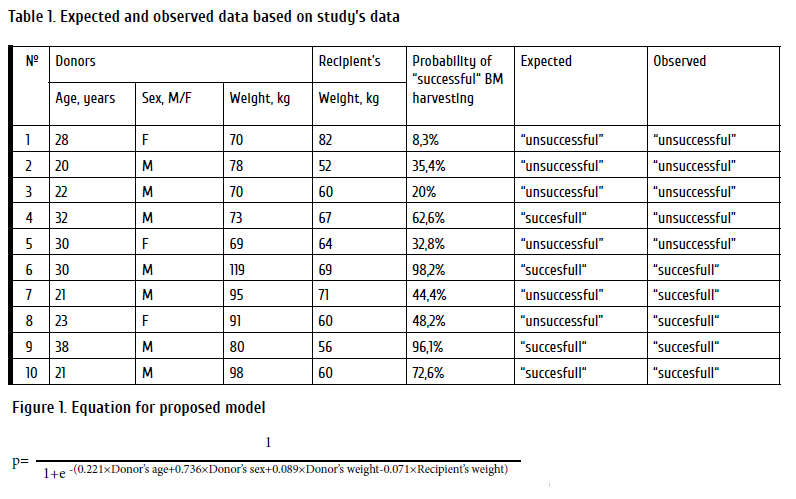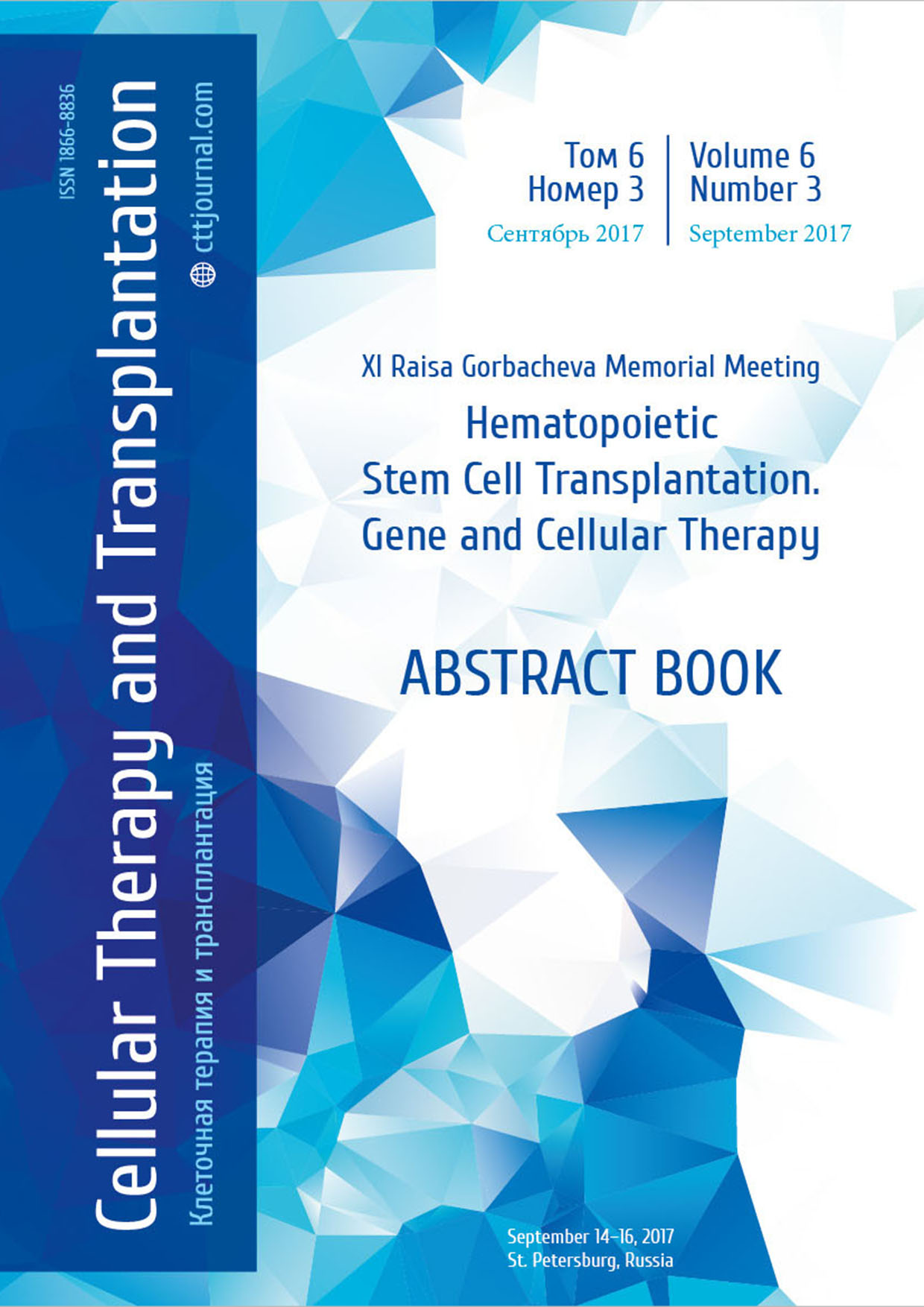Model for estimating the probability of “successful” bone marrow harvesting in unrelated donors
Mikhail Yu. Drokov, Kristina A. Zharikova, Larisa A. Kuzmina, Tatyana V. Gaponova, Vera A. Vasilyeva, Natalia N. Popova, Ekaterina D. Mikhalcova, Darya S. Dubnyak, Olga M. Koroleva, Olga N. Baiteriyakova, Elena N. Parovichnikova, Valery G. Savchenko
Summary
National Research Center for Hematology, Moscow, Russian FederationIntroduction
Despite all advantages of using bone marrow (BM) as a graft source for allogeneic hematopoietic stem cell transplantation (allo-HSCT), this graft type also has some disadvantages. Lower T cell numbers provide both decreased rates of acute and chronic graft-versus host disease (GVHD), and an increased graft failure risk (GF). Bone marrow cellularity is the main factor which affects GF rate in BM recipients, especially in unrelated allo-HSCT. Thus, an increased rate of GF may be due to choosing improper stem cells source (marrow cells instead of peripheral blood stem cells) from the donors who cannot initially donate sufficient numbers of BM stem cells. Here we report a predictive model of “successful” (≥3*108/kg) BM harvesting from unrelated donors.Patients and methods
The data about age, weight and donor’s sex of 30 unrelated donors were aggregated from a donor center (DC), information about recipients was taken from medical histories at the transplant center (TC). Number of BM total nucleated cells (TNC) per kg of the recipient’s body weight was the variable of interest. A “successful” harvesting was defined as ≥3*108/kg, whereas lower cell amounts were interpreted as “unsuccessful”. A regression model was applied in order to evaluate probability of the “successful” harvesting. A fit model was assessed using the Hosmer-Lemeshow goodnessoffit test. The entire data analysis was conducted by means of SPSS ver 23. (IBM, Chicago, Ill., USA).


